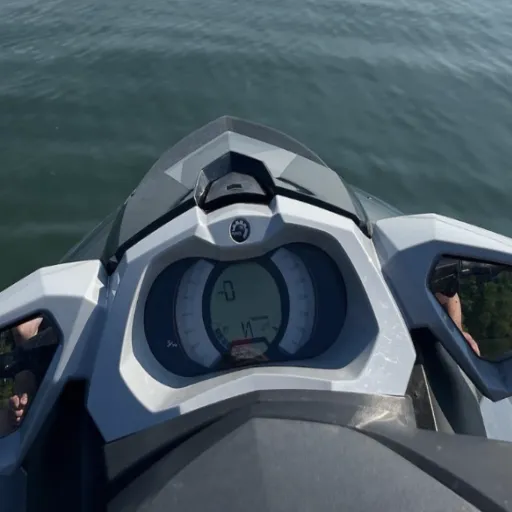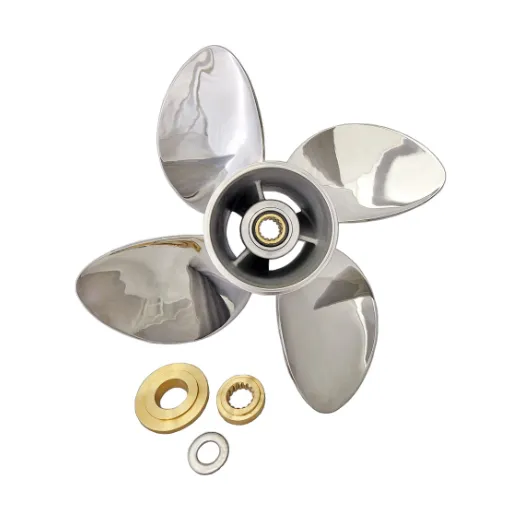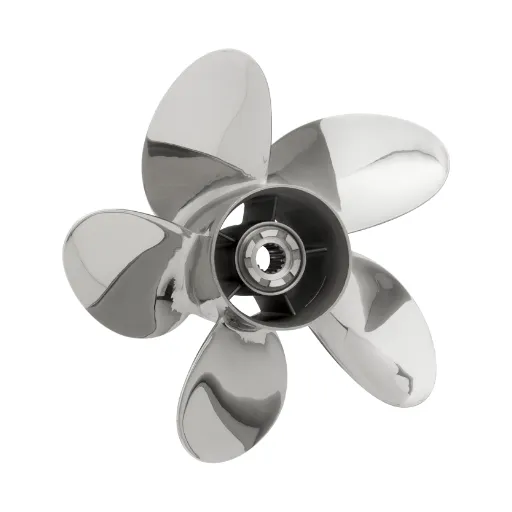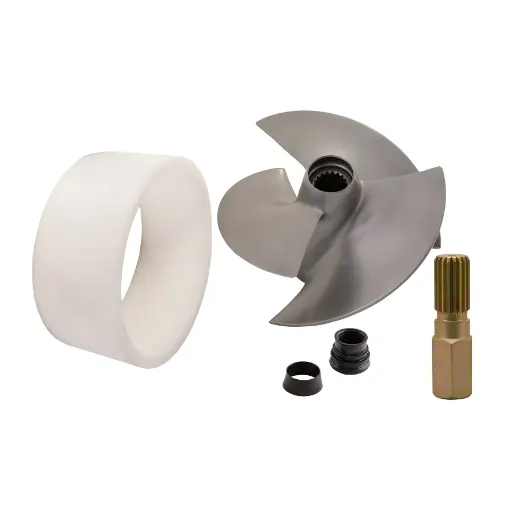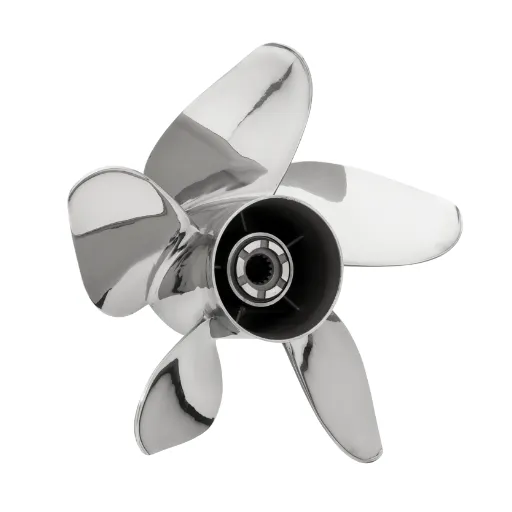Riding a jet ski can really make a person feel alive, as it provides a thrilling experience of racing as well as a calming one of being on the water. However, before you take off and go surfing, it is very important to know the rules and regulations that apply to the use of jet skis. Do you need to be licensed to ride one? Are there any age limits or safety measures that you must observe? If you are a beginner wanting to have a thrilling weekend or an experienced person into water sports revising the regulations, then this post will explain what you have to know about jet ski licensing and regulations. Keep your knowledge up-to-date and water will be your safe and responsible playground!
Introduction to Jet Ski Licensing
What is a Jet Ski?
A jet ski refers to a personal watercraft (PWC) that gives a single person the chance to skim the surface of the water at different speeds. The inboard engine powers it, and the jet of water gives the propulsion, which makes it fast, nimble and suitable for entertaining water activities or going short distances. The very thing that makes it synonymous with fun and adventure is the reason why it is the most popular choice among those seeking an adrenaline-pumping experience in the water.
Most jet skis are built to hold between one and three people, and are controlled by handlebars like those of a bicycle. Sitting or at times standing is allowed for the riders depending on the model. The main difference between a jet ski and a boat is that the former has no exposed propeller which makes it safer for both the riders and the swimmers. The compactness and the high maneuverability of jet skis make it possible for them to reach any type of water body whether it be lakes, rivers or ocean coasts.
The power and speed of a jet ski imply that the rider’s safety and legal aspects need to be considered. Most areas have particular rules including one for safety gear, age limits and even sometimes the requirement of licensing for the operators. Being aware of what a jet ski is and how it operates is the primary condition for the adventure on this watercraft to be pleasant and safe.
Why Licensing is Important
Licensing plays a vital role in the safe operation of jet skis. It guarantees that the operators are well trained and have the required knowledge and skills to handle a jet ski properly. During the licensing process, users are guided on the different ways to operate the watercraft, local regulations, and the safest practices, thereby reducing accident cases. The licensing procedure commonly encompasses both the theoretical and practical trainings, which therefore empowers the operators to responsibly manage their way through various water situations.
Licensing also enforces the legal obligations. Most places lay down these laws to ensure public safety and to keep the waterways clean. Operators without a valid license may trespass unknowingly in restricted areas, violate speed and navigation regulations, thus incurring fines or getting other penalties. Licensing is a way of showing that the operator knows the rules and obeys them.
More so, a license requirement creates accountability among jet ski users. The chances of individually trained and licensed people getting engaged in unsafe practices are low thus they will not only be reducing the risk for themselves but also to others. Licensing is an indispensable part of the whole process of building a responsible jet skiing community which will in turn help in enjoying and keeping this popular recreational activity available to everyone.
Overview of Personal Watercraft (PWC) Operation
Operating a Personal Watercraft (PWC) demands a basic understanding of operating procedures and safety measures. Powered by an inboard engine, a pump jet takes the thrust generated to force the craft ahead. Being very light in weight and agile, they are a thrill for recreational water activities, with room for one or more persons. However, given their high speed and maneuverability, one must conscientiously learn safety precautions and respect them while operating.
Users need to familiarize themselves with important controls like the throttle, steering mechanism, and safety features such as the engine shut-off lanyards or kill switch to operate a PWC. It is essential to perform pre-ride checks to avoid troubles in the water, which include fuel levels, safety gear, and engine condition. Riding on a PWC demands balance and concentration, especially in crowded waterways or regions where weather changes bring potential hindrances of obstacles or other boaters.
Keep safety as the foremost consideration in PWC operation and abide by any regulation. All operators must know speed limits; no-wake zones; and local laws concerning minimum age, licenses, etc. It is imperative to wear an approved life jacket all the time. Other safety measures include keeping clear of other vessels and remaining aware of the surroundings to avoid accidents. Users can enjoy themselves on water while ensuring safety for others by following these basic safety codes.
Licensing Requirements for Jet Ski Operation
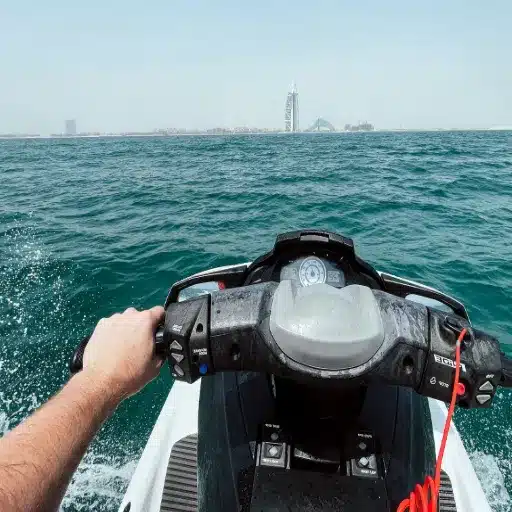
Do You Need a License to Ride a Jet Ski?
Yes, generally in most areas, you need a license or a certification in boating safety to operate a jet ski. But specific requirements depend on laws of your state or country, and in most cases, they can include the completion of a boating safety course by the operator before he is given a license or certification. So, the course is supposed to make sure that all jet ski riders are aware of the waterways, the rules of safety, and how to operate personal watercraft responsibly.
For instance, in the United States, in many states, it is required that anyone acting as an operator of a jet ski and personal watercraft in general hold a Boater Education Card or equivalent proof of completion of a safety course. These laws generally set minimum ages where age requirements are set for operating a jet ski, while for younger operators, some states even impose secondary regulations like requiring adult supervision. If you want to make sure you’re legal, check the laws in your own area before stepping out onto the water.
Violation of licensing requirements may result in other penalties, like fines or denial of the personal watercraft’s operation. More importantly, the license assures that you have the needed information to lower the chance of accidents or protect the environment and a safe enjoyment of jet skiing. Always keep your priorities on knowing and complying with the rules relating to jet ski activities for your area.
Licensing Variations Across States
However, as diverse as the local regulations and watersport policies are, jet ski licensing requirements widely differ from one state to the other. For example, some states such as Florida and Texas require operators to undergo a boating safety course and have a boating safety education card in hand. These courses shall include important topics such as navigation rules, laws concerning personal watercraft, and safety protocols to ensure that these operators would have some kind of preparation for situations that could arise when navigating waters. On the opposite side, states like Alaska may welcome more lenient regulations requiring a formal licensing process for the recreational use of jet skis but stressing on the importance of adhering to safety and environmental laws.
Age requirements for jet ski operation can vary from one state to another. Some states like California and New York generally prohibit the operation of a personal watercraft by persons under the age of 16 unless they have been with a supervising adult who holds a state license or they have completed a State approved safety course. Such measures are meant to protect younger operators since they may not fully understand the risks and responsibilities associated with the powerful watercraft. Some states restrict operation during particular hours or in areas deemed hazardous to the riders and the surrounding ecosystems.
Another important thing to know is that licensing reciprocity varies. One state may accept certificates from another region, while other sites may keep visiting licensees under local licensing requirements before operation of a watercraft. So if one intends to jet ski across state lines, this is one scenario that requires thorough research to avoid possible penalties or restrictions. Knowledge pertaining to regional licensing requirements will not only ensure compliance but will also promote safer and fun-filled water experiences.
Importance of a Boating License
In every sense, obtaining a boating license means having an official credential that will give one legitimacy in operating a water craft. This document acts as proof that an individual has been taught and is aware of basic boating laws, safety measures, and navigation. With the training given, operators should be able to manage an emergency, read a chart, or know their right-of-way while on the water. These skills guarantee not only the safety of the user but also the safety of fellow boaters, swimmers, and marine life.
Distributing boating licenses diminishes such risks by ensuring that operators underwent sufficient education on water safety matters. For example, guidelines and regulations on life jacket requirements, limits on alcohol consumption during boating, and weather condition assessments found in licensing courses mold operational safety in ways that concurrently decrease accident occurrences on water and improve maritime safety. In addition, depending on the state, in many situations, it is a legal requirement that a person must be licensed or otherwise certified to operate a boat; therefore, obtaining a license also protects the operator from suffering any unnecessary fines or legal troubles.
Beyond safety and legality, a boating license grants more opportunities and privileges within the boating community. Certification, in fact, is generally required by companies and agencies before you can rent a boat or similar vessel. Some insurers also give discounts to boaters with licenses because they know that the license-holder is invested in safety and responsibility. If you are interested in recreational boating or wish to capitalize on this ample professional business in maritime industries, then obtaining your boating license is a vital step that will instill confidence, competence, and credibility onto the water.
California Jet Ski Regulations
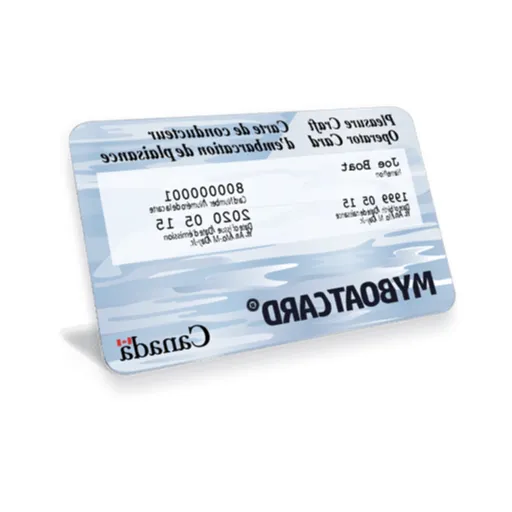
California Boater Card Explained
The California Boater Card serves as proof that the person operating motorized vessels on the waterways of the State has passed a state-licensed class in boater safety and is aware of at least some of the basic laws of navigation and safety measures, along with stewardship for the environment. The law was passed in 2018 and requires persons within certain age groups to have the California Boater Card, beginning with the initial rollout and to include all boaters by 2025. Its aim is to make boating safer and lessen accidents which stem from operators lacking experience or training.
A California Boater Card is offered once a person has completed a California State Parks Division of Boating and Waterways-approved boater safety course. They are open for being held in person or online. Thus, one can pick a mode according to his or her needs. After passing the examination at the end of the course, boaters can apply for the card from the official site. The card is good for life, so a boatman has practically gone through a one-time certification process, which is a boon for recreational and professional boaters alike.
The card is, in fact, part of a larger program to coordinate boating safety standards on a nationwide basis. Being a participant like many other states, California is included in the National Association of State Boating Law Administrators (NASBLA) program, which ensures that its law is in accordance with best practices. With this card requirement, the state of California is also strengthening the safety aspect within its waterways, while environmental protection is achieved through the education of boaters on acceptable practices. For anybody who is just starting out with boat operations or who has learned to navigate the lakes, rivers, and coastline of this State, the Boater Card will be an important ingredient in a safe and enjoyable boating experience.
Restrictions for Operating a Jet Ski in California
In the interest of safety and compliance, California sets specific regulations for jet ski operation. Operators must comply with the state’s minimum age requirement, which disallows the operation of a jet ski by those younger than 16 years. Those who are 12 to 15 years old may operate a jet ski only with direct adult supervision by a person at least 18 years of age and holding the California Boater Card.
Moreover, jet ski operators are required by law to observe safety equipment rules, which include wearing a life jacket approved by the U. S. Coast Guard and ensuring the jet ski is equipped with a fire extinguisher, signaling devices, and a cutoff lanyard set in place for emergencies to prevent unattended operation of the vehicle.
For all operations, of course, speed and proximity must be strictly adhered to, such as to keep a distance from swimmers, other watercrafts, or properties. The operator must also not run the vessel recklessly or aggressively, which may include jumping wakes too close to another vessel, for which he is subject to fines and penalties. The misuse of jet skis under the influence of drugs or alcohol is equally prohibited under California’s laws for boating while intoxicated (BUI).
If respected, BUI laws would allow jet ski operators to remain within the legal framework of California State law, thus creating a safer and most enjoyable environment for all fellow seafarers.
Exemptions and Special Cases
While all jet ski regulations in California remain generally applicable, certain exceptions and special situations are worthy of consideration. In particular, many law enforcement agencies and public safety entities accept exemptions to operate jet skis under activities that would otherwise contravene the laws. Their priority is public safety-threatened activities, such as patrolling waterways or performing search-and-rescue functions-against emergencies. All of these carve-outs highlight the significance of special training and operational discretion, provided that standards of safety are followed when the situation is non-emergency.
Yet one thing must be exempted from age restrictions related to jet ski operation under organized events. For instance, during competitive race events or demonstrations considered worthy of approval, minors may be allowed to operate jet skis under very close supervision provided that certain safety standards are adhered to and the activity is approved by the relevant authorities. These cases are very strictly regulated with the objective of ensuring that the safety of participants and spectators is not compromised in any way and are intended to serve as an encouragement for the conduct of these events.
Localized laws and environmental concerns may provide for some exceptions. The speed or noise laws for some of California’s waterways may vary with regards to their distance from residential or ecologically sensitive areas. Such local exceptions stress the importance of knowing the marine rules pertaining to the place you are visiting. Doing your own research on local rules and interacting with harbor patrol or any other government agency while in need will go a long way in avoiding problems or hurting the environment.
Safety Guidelines for Jet Ski Operators

Best Practices for Safe Jet Ski Operation
Enjoying some jet ski ride can be quite thrilling, and yet, it is safety first. For safety reasons, wear your U. S. Coast Guard-approved life jacket before boarding a jet ski, since it greatly reduces in the risk of injury or drowning. Also, it would be prudent to assess the controls and operation manual of your jet ski, and get familiarized with them before venturing into the waters. Never start, kick, or accelerate abruptly as it could potentially result in a collision or loss of balance.
If you intend to navigate a busy waterway, situational awareness is a must. Always respect the speed limits, keep a safe distance from any active craft, and avoid jet skiing in restricted areas or near swimmers. On the safety note, keep a sharp eye on the weather; strong winds or choppy waters pose a hazard to your jet skiing.
Further, operators should never consume alcohol or drugs before or during operation, as impaired judgment and slow reactions make accidents more likely. Also important to your safety is the regular maintenance of the jet ski, including checks on the throttle, steering system, and safety lanyard, in case any mechanical failure is to set in during the ride.
Finally, a jet ski safety course can instruct you in proper handling techniques and navigation skills. Such certified courses instruct you about water traffic rules, emergency signals, and other necessary protocols, equipping you to engage in jet skiing responsibly with your own safety and that of others.
Common Misconceptions About Jet Ski Safety
A misconception held by many when it comes to Jet ski safety is that these vehicles do not require training to be operated. While the Jet skis might appear easy to operate-Way, especially to experienced riders-technical knowledge or practice is required to safely manage in different water conditions. An accident can occur from improper handling, unawareness of steering mechanisms, or lack of understanding of what high speeds can do for the scenario. Awareness should be created about safety courses for potential riders to be able to face situations in reality.
Another popular myth is that life jackets are not on calm waters. A lot of people think that a PFD is unnecessary if he considers himself a good swimmer or if the water seems calm. However, sudden changes in weather and even collisions or fallings-from can take place and make life jackets very necessary. Most regulations governing boats always make it a point that a PFD should be worn so safety will be considered despite the skill of the rider at swimming or the conditions that he considers least favorable.
Lastly, many think jet skiing carries almost no danger so long as they remain in the given areas. To be sure, being there does lessen some risks; conversely, it does not remove all. There are still hazards arising from heavy traffic in the waterway, limited visibility from one point, or outright recklessness of other fellow riders. This misconception makes it all the more important to stay alert, keep a reasonable distance from other watercraft, and obey navigation laws in your locality at all times. Eradicating these misconceptions and performing the necessary cautions will guarantee a great time safely for jet skiing.
Importance of Operator Training and Certification
Issues like safety and competence get addressed by means of operator training and certification. Training will teach operators how to hold their watercraft with confidence, how to navigate, and respond to emergency issues. Most territories demand the certification of the jet ski operator, as it is better that a knowledgeable rider curtails any sort of accident and hazard in the water. The program training usually covers watercraft mechanics, the use of safety equipment, and environmental conservation.
Recent studies illustrate the operators’ training being favorable toward accident prevention. The U. S. Coast Guard reported that an ample percentage of jet-ski-related incidents involved operators in 2022 with little to no formal education regarding watercraft safety. This sets up a good argument for mass-scale training and implementation of a standard certification to raise the levels of skill and reduce risk. Certified operators realize dangers better, make smarter decisions, respect local ordinances, and in the end, create an environment where others sharing the water can coexist more safely.
Put differently, operator training also creates environmentally responsible jet ski operators. Typical curricula stress the idea that jet ski operators must protect the marine ecosystem by steering clear of shallow areas, staying away from wildlife, and disposing of waste correctly. Thus, these processes keep jet skiing fun while also safeguarding nature from the acts of those operating jet skis. Operator education helps in building greater abilities for individuals; emphasis on this process is much needed to make the waterways sustainable for the long term, which indicates multiple advantages of certification programs.
Trends in Personal Watercraft for 2025
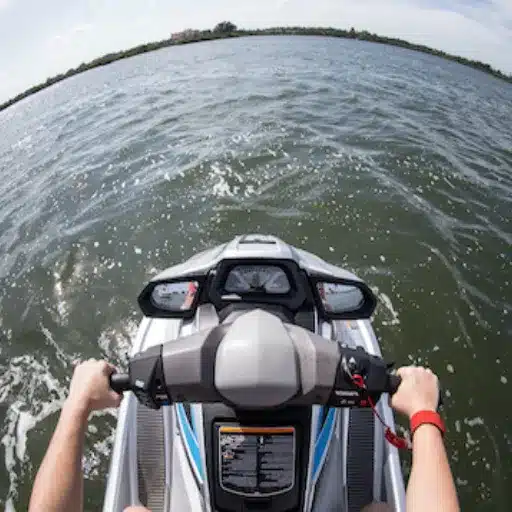
Innovations in Jet Ski Technology
Looking forward to 2025, jet ski technology continues to evolve with thrilling innovations that enhance performance, safety, and environmental sustainability. Arguably, the most important advancement is the implementation of electric motors. In doing so, carbon emissions get reduced, thereby lessening environmental impact while also offering a quieter terrain for an interaction-filled moment with riders and the surrounding wildlife. Many manufacturers are currently invested in battery technologies that promise higher ranges, faster charging times, and more power outputs.
Advanced navigation and safety systems form another key development that is being incorporated. New jet skis boast GPS-assisted control, obstacle avoidance, and smart sensors capable of detecting obstacles in real-time. Of course, such technologies render the water safer and afford riders accurate control and confidence. Also, the manufacturers are upgrading onboard infotainment with touchscreen controls, music controls, and more smartphone connectivity options for entertainment on-the-go.
The trend toward modular and customizable designs has been on the rise in recent years. Henceforth, prospective models will probably allow jet ski lovers to build a watercraft according to specific needs, whether that entails adjustable seats, storage compartments, or interchangeable performance modules. These developments are a reflection of the greater drift toward extremely versatile personal watercraft that appeal recreationally, professionally, and environmentally.
Impact of Electric Jet Ski Impellers on Performance
Electric jet ski impellers have introduced a series of advancements that significantly impact performance, with notable details and data showcasing their influence. Below are five key impacts and examples:
| Impact Category | Description & Data |
|---|---|
| Improved Efficiency | Electric impellers are designed for precision and smooth operation, thereby minimizing energy wastage. Studies, for instance, have shown that propulsion efficiency can be increased by up to 20 percent over what can be attained using impellers of traditional combustion engines. |
| Quieter Operation | Least noise pollution can be created due to the absence of combustion. Several of these electric impellers can operate at sound levels below 50 decibels, perfect for use in environmentally sensitive areas or quiet recreational situations. |
| Environment-Friendly | Electric-powered impellers do not release an exhaust into the ambience that may affect any marine organisms. Data has it that switching to electric impellers can cut down on carbon dioxide emissions by something close to 2,000 kilograms per jet ski every year. |
| Enhanced Speed Control | The electric system brings about a higher level of responsiveness in speed adjustments and smoother power delivery-unfortunate under this scope, some professional riders estimate that an improvement of 15% is achieved in handling precision during competitive situations. |
| Low Maintenance | Electric jet impellers are indeed considered to have fewer moving parts as opposed to mechanical systems. This is said to translate somewhat to less wear and tear. Some owners report maintenance cost reductions of nearly 30%, whereas electric parts tend to last much longer without frequent servicing. |
Hence, the mentioned benefits may be crucial in drastically reverting the career of personal watercraft impellers.
Future of Composite Materials in Jet Ski Design
Composite materials have entered a new era, changing jet ski design and production, offering performance features such as strength, durability, and lightness. These materials, which include carbon fiber-reinforced polymers and advanced glass composites, allow the manufacturer to mold lightweight hulls and components without compromising their structural integrity. This weight reduction naturally translates to increased speeds, higher fuel efficiency, and better maneuverability, thus serving the needs of the performance-oriented buyer and, quite notably, the eco-conscious buyer as well.
Research done recently, for example, illustrates how substituting higher composite materials for traditional marine-grade materials could drop the weight down by almost 20% for the overall jet ski. Such downsizing in weight lends itself to faster acceleration and better responsiveness; fuel consumption is also lowered, which unarguably decreases the ecological footprint. Besides, being in contradiction with nature, composite materials resist corrosion, a feature that is of utmost importance for vessels operational within either freshwater or saltwater environments.
Improvements in composite materials allow manufacturers to fashion sleeker aerodynamic hulls, which contribute to the hydrodynamics, handling, and stability of watercraft at high speed. Enhancements in the future will see smart materials being incorporated-that is, those materials which self-repair small damages and thereby increase the lifespan of the jet ski while minimizing owner maintenance.
The jet ski industry is paving the way for personal watercraft that is more efficient, environmentally friendly, and performance-oriented by continued development in composite materials. The occurrence of these materials solidifies their place as one major factor in the evolution of marine recreation.
References
- Do You Need a License to Drive a Jet Ski?
This article provides an overview of licensing requirements for jet ski operation, emphasizing the need for a boating certificate from a NASBLA-approved boating safety course in many states. - Personal Watercraft (PWC) | Virginia DWR
This resource outlines the legal requirements for operating personal watercraft in Virginia, including age restrictions and the necessity of boater education certification. - Did You Guys Know You Need a License to Drive a Boat?
This discussion highlights the varying licensing requirements across different states, noting that some states require a license for jet skis but not for boats. - Click here to read more.
Frequently Asked Questions (FAQ)
Q: Do you need a driver’s license to operate a jet ski in California?
A: Yes, in California, anyone who was born on or after January 1, 1988, must have a California Boater Card issued to them for them to legally operate a jet ski. This card is given after registering and completing a boating safety course approved by the California Division of Boating and Waterways.
Q: What is it really?
A: The California Boater Card indicates certification of completion for a course in boating safety. The law in California states that anyone who is 16 years of age or older and is operating a personal watercraft (PWC) is required to have it.
Q: Does one need a boating safety certificate to rent a jet ski?
A: Most companies require you to have a boating safety certificate to rent a jet ski. This is to ensure that you know about the safe operation of the vessel.
Q: What age are you to drive jet skis?
A: To legally operate a jet ski in California, you must be at least 16. If under 18, carry a certificate of completion for a boating safety course from an authorized California agency.
Q: What are the safety requirements while operating a jet ski?
A: While operating a jet ski, you must keep your life jacket on. Also, the vessel must have an ignition safety switch, as well as a whistle or some other noise-making device.
Q: Does one have to register their jet ski in California?
A: Yes, all jet skis must be registered with California DMV. Registration includes the identification number and the certificate of ownership.
Q: Can you operate a jet ski without the presence of a passenger?
A: Yes, jet skis can be operated alone; however, according to safety guidelines, if you have a passenger, they should be supervised while onboard and must wear life jackets at all times.
Q: What are the penalties for not possessing a boating safety certificate?
A: Operation of jet skis without a valid boating safety certificate will only attract the consequent fines and penalties as stipulated in the California Harbors and Navigation Code. One must, therefore, adhere to such regulation in order to prevent property damages and allow the safe conduct of boating.
Q: Are there any exceptions to the requirement that one must be licensed to operate a jet ski?
A: Some exceptions may be in play- for instance, for persons having the jet ski maneuvered under the direct supervision of an operator. Nevertheless, one should check the California law for precise regulation and exemptions concerning jet-ski operating.
Stay Safe on the Water!
Remember, responsible jet skiing starts with proper education and licensing. Always follow local regulations, wear your safety gear, and respect the waterways. Enjoy your ride!




